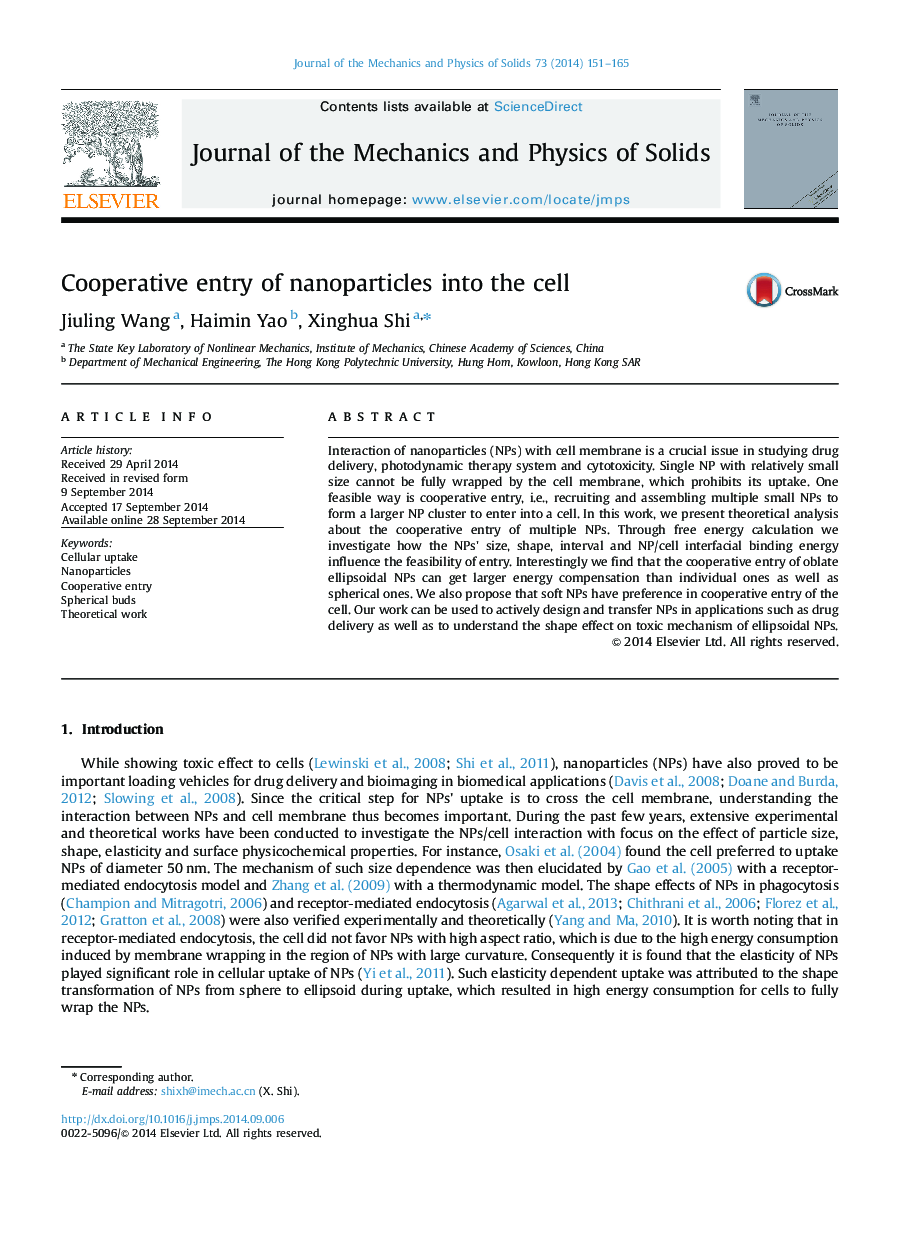| Article ID | Journal | Published Year | Pages | File Type |
|---|---|---|---|---|
| 7178147 | Journal of the Mechanics and Physics of Solids | 2014 | 15 Pages |
Abstract
Interaction of nanoparticles (NPs) with cell membrane is a crucial issue in studying drug delivery, photodynamic therapy system and cytotoxicity. Single NP with relatively small size cannot be fully wrapped by the cell membrane, which prohibits its uptake. One feasible way is cooperative entry, i.e., recruiting and assembling multiple small NPs to form a larger NP cluster to enter into a cell. In this work, we present theoretical analysis about the cooperative entry of multiple NPs. Through free energy calculation we investigate how the NPs׳ size, shape, interval and NP/cell interfacial binding energy influence the feasibility of entry. Interestingly we find that the cooperative entry of oblate ellipsoidal NPs can get larger energy compensation than individual ones as well as spherical ones. We also propose that soft NPs have preference in cooperative entry of the cell. Our work can be used to actively design and transfer NPs in applications such as drug delivery as well as to understand the shape effect on toxic mechanism of ellipsoidal NPs.
Keywords
Related Topics
Physical Sciences and Engineering
Engineering
Mechanical Engineering
Authors
Jiuling Wang, Haimin Yao, Xinghua Shi,
